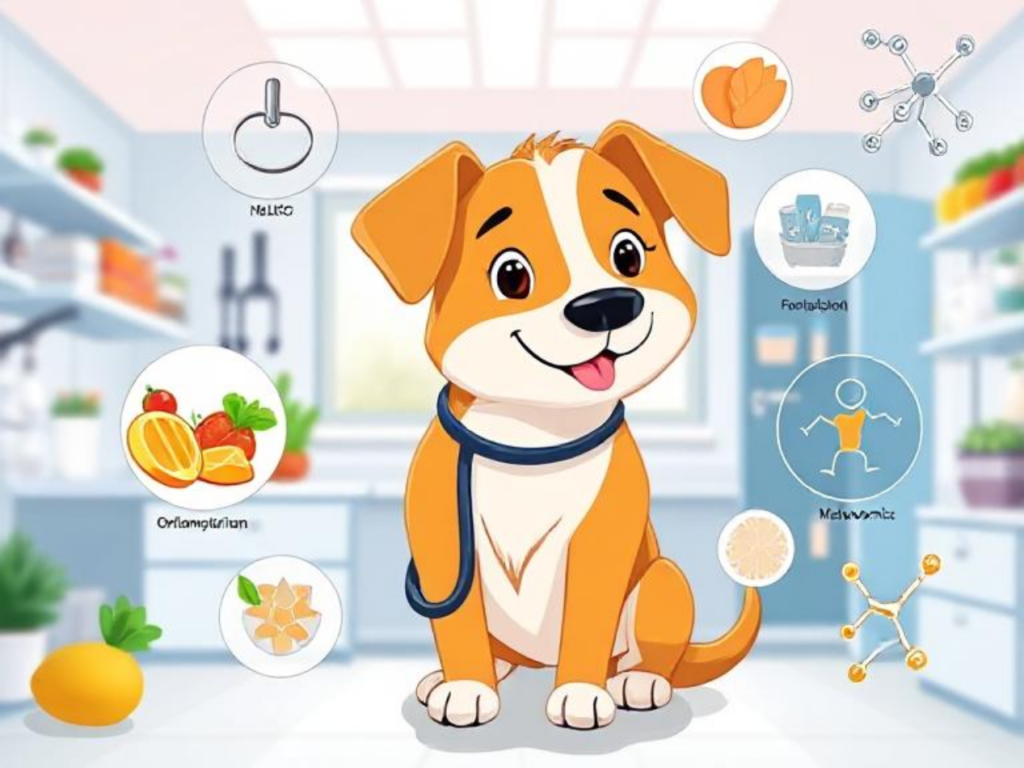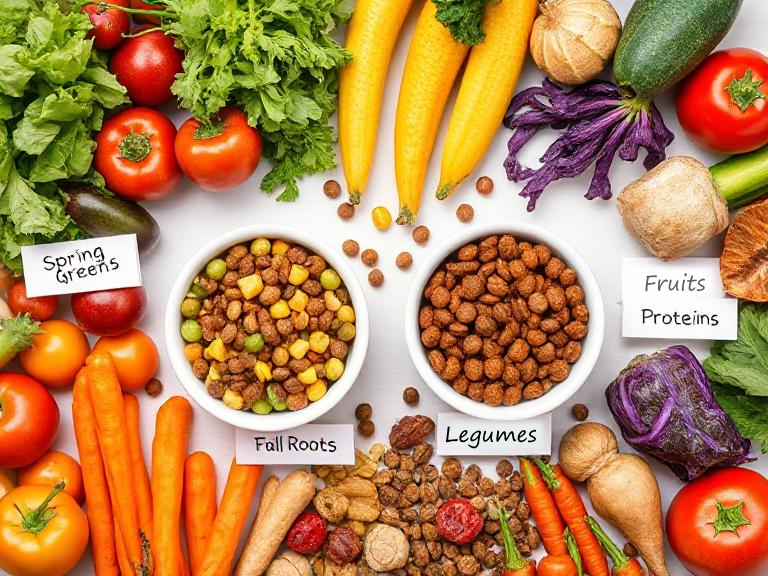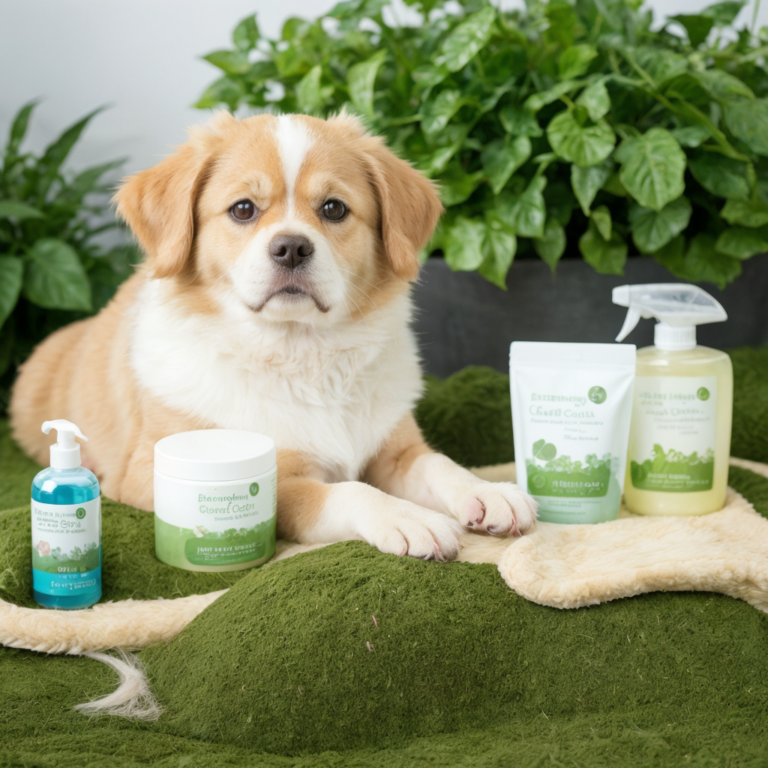The Holistic Blueprint for Pet Allergy Relief

Ever notice how your furry friend starts scratching like crazy when the seasons change? It’s frustrating, right? You see them chew at their paws, sneeze more often, or just look generally uncomfortable. That’s when the idea of a “seasonal meal plan” can really come in handy. Because seasonal changes don’t just affect us—they affect our pets, too. And while we can grab some antihistamines from the medicine cabinet, our pets rely on us to help them find relief.
So what’s the big deal with “seasonal allergies in pets” anyway? Well, animals can react to pollen, mold, and a ton of other environmental triggers, just like we do. Their bodies might become inflamed, they might get itchy skin, and it can all become a real headache. But here’s the good news: You can tackle those allergies through the food you feed your pet. In fact, a personalized meal plan for pets is sometimes the most direct route to calming an irritated immune system.
But how do you go about building such a plan? That’s where a holistic pet nutrition approach comes in. It goes beyond just giving your pet the usual store-bought kibble. It looks at functional nutrition for animals, orthomolecular pet care, and even metabolomic insights for pet health to truly tailor meals to your pet’s needs. And guess what? It doesn’t have to be complicated. You can start slow, keep it simple, and make sure your pet gets what they need to manage those pesky allergens.
Understanding the Holistic Approach to Pet Allergy Relief

Holistic pet care is like seeing a puzzle from every angle. Sometimes you don’t know you’ve been missing that corner piece until you take a step back and see the whole picture. If you provide only one supplement or rely on medication, you may be missing other key methods of assistance.
Veterinarians are a big piece of this puzzle. They are the first line of defense, after all? They can test your pet for ragweed, dust mites or any number of common irritants to see if it’s allergic to them. Then they can make recommendations, such as some foods approved by vets for pets or particular treatments. But we can’t stop there. Because functional nutrition has its place, too. Functional nutrition is using whole foods to fuel and support our immune systems. For allergy-riddled pets, that could mean emphasizing foods that are scientifically thought to have anti-inflammatory effects or restricting those that trigger immune responses (Freedman, 2022).
And then there’s orthomolecular pet care, which is the practice of individualizing nutrients to optimal levels for an individual pet’s needs (Abrams, 2021). Imagine your pet is lacking the right balance of vitamins or minerals. Is it any wonder the poor thing is scratching up a storm. Then there’s metabolomics — the science of studying the metabolites in an organism so we can tell exactly what’s going on inside. This is pretty next-level stuff, but increasingly vets are getting in on the act (Smith & Chen, 2020). Because the better you understand your pet’s internal chemistry, the more easily you can devise a meal plan.
When you combine all of these approaches, it’s like giving your pet a 360-degree support system, think about it. You have the doctor’s wisdom, the nutrition evidence, the targeted nutrients, and the real-time data from metabolic tests. That is the sweet spot for addressing dog and cat allergy management.
Seasonal Meal Planning Essentials

So how does a seasonal meal plan differ from a regular old meal plan? It’s all in the ingredients and nutrients. Each season brings unique triggers. Spring might be loaded with pollen. Fall might have mold or ragweed. And winter can bring dryness that irritates the skin.
Identifying Seasonal Ingredients
Think about spring. It’s often associated with fresh greens. Those leafy veggies might help detox your pet’s system and provide a nutrient boost. Summer? That’s when hydrating foods can help. When the weather is hot, we naturally crave foods that hydrates the body like fresh fruit and vegetables watermelon and green salads.
Then for fall and winter, consider root veggies and warmer dishes. Yes, even pets sometimes appreciate a soothing, warm meal.
Macro and Micro Balance
It’s not just about carbs versus proteins. It’s about vitamins and minerals that reduce inflammation. For instance, zinc is known for helping with skin health. And vitamin A can be great for immune support (Freedman & Patel, 2021).
Rotation Diets
Ever heard of “rotational feeding for pets”? That means switching up the type of protein source—like chicken one week, lamb the next, maybe fish the following week. This can help prevent your pet from developing sensitivities to the same old protein. Plus, it keeps mealtime interesting.
Supplemental Boosts
If you’re focusing on an anti-inflammatory pet diet, you might toss in things like fish oil or probiotics. These help keep your pet’s gut in check. And a healthy gut is the foundation of a balanced immune response.
So do you need to be a gourmet chef to pull this off? Absolutely not. Keep it simple. But pay attention to the protein sources, the seasonal produce, and the extra touches like healthy fats or low-glycemic veggies. Your pet’s immune system will thank you.
Personalizing the Plan: Identifying Individual Pet Needs

No two pets are alike. Some run five laps around the yard before breakfast. Others won’t budge from the couch until lunchtime. And your job is to figure out how these differences play into their diet.
Assessing Allergen Triggers
Notice if your pet starts scratching more after rolling in grass. Or do they sneeze after a trip to a dusty garage? Because understanding indoor vs. outdoor allergens helps you tweak their meals. If you suspect a food trigger, talk to your vet about an elimination diet to see what’s really behind those allergic flares.
Veterinary Testing and Guidance
Your vet might suggest blood tests or skin prick tests to zero in on the worst offenders. They might also recommend metabolomic screenings if they’re on the cutting edge of pet medicine (Smith & Chen, 2020). But here’s something else to keep in mind: Pet nutritionists can be incredibly helpful when you’re trying to create a meal plan around all this new information. They specialize in figuring out how different foods affect your pet’s body. And they can work hand-in-hand with your vet to interpret those test results and tweak your pet’s meals accordingly. It’s an easy way to make sure you’re getting the best guidance possible—from both a medical and a nutritional standpoint.
Symptom Tracking
Yes, it can feel like a chore. But keep a journal for at least a few weeks. Note down what your pet eats, how they react, and any environmental exposures (like going for a walk in a heavily pollinated park). Over time, you’ll start to see patterns. Maybe chicken plus a run in the park equals scratching galore.
Adjusting for Breed, Age, and Lifestyle
Small breeds might do better with frequent, smaller meals. Large breeds might need more substantial portions. Senior pets might benefit from easily digestible proteins.
The Role of Anti-Inflammatory and Hypoallergenic Ingredients

We’ve all heard that certain foods help reduce inflammation, right? The same holds true for pets. Ingredients like turmeric, ginger, and omega-rich fish oils can be powerhouse additions to a meal. And if you’re going for “natural remedies for pet allergies,” these anti-inflammatory stars might be your best friends.
Common Anti-Inflammatory Foods
Blueberries, broccoli, and leafy greens are often recommended. They’re full of antioxidants and can help calm an overactive immune system. The best part? Many pets actually enjoy a little fruit or veggie snack.
Hypoallergenic Proteins
Sometimes, you’ll find that your pet reacts to the most common proteins like chicken or beef. That’s where hypoallergenic options like rabbit, duck, or even kangaroo might come in. Yes, kangaroo. It might sound bizarre, but some pets with allergies thrive on unusual proteins.
Orthomolecular Insights
Orthomolecular pet care suggests that balancing vitamins and minerals is vital (Abrams, 2021). For example, vitamin D can support immune function, while vitamin E helps reduce oxidative stress. It’s kind of like giving your pet a finely tuned multivitamin, but in a form they actually enjoy eating.
And remember, you don’t have to be perfect with this. If you can even replace half of your pet’s usual kibble with fresh, anti-inflammatory ingredients, you might start seeing changes. Little by little.
Integrating Lifestyle Factors for Maximum Allergy Relief
Food is essential, but it’s not the whole story. If your pet is still sleeping on dusty blankets or going out for walks in an area loaded with pollen, you might see those allergies flare up regardless of diet.
- Environmental Adjustments
Wash your pet’s bedding regularly. Vacuum often. If you know the pollen count is high, consider shorter walks or wiping their paws when they come inside. - Activity and Stress Management
Stress can weaken the immune system. And a weakened immune system can overreact to allergens. So make sure your pet gets enough exercise, playtime, and mental stimulation. Maybe try puzzle toys or fun games. - Periodic Check-Ins
Don’t just set your seasonal pet care strategies once and forget it. See how things are going after a month or two. If your pet’s not improving, maybe something else is at play. Adjust the plan, maybe switch up proteins, and keep trying.
Realistic Expectations and Long-Term Benefits
Let’s be real. Your pet isn’t going to stop scratching overnight. It might take a few weeks—or even a couple of months—before you notice a real shift. But that doesn’t mean you should give up. Because when you find that magic combo of food, supplements, and environment that works for your pet, it’s like turning the page to a whole new chapter.
This approach can do more than just reduce seasonal allergy symptoms over time. It can support overall vitality, help your pet maintain a healthier weight, and even prolong their lifespan. Your pet will likely have more energy, better digestion, and maybe even a glossier coat.
And once you see these improvements, you’ll realize it’s not just about the allergies. It’s about creating a solid foundation for your pet’s well-being. Because a robust immune system can handle life’s little hurdles with greater ease.
Conclusion

Seasonal allergies in pets are frustrating—for both you and your furry companion. But you’re not helpless. You can start crafting a meal plan that aligns with the seasons, addresses your pet’s unique needs, and leans on things like orthomolecular pet care, functional nutrition for animals, and even metabolomic insights for pet health.
Any proactive change you make to improve the quality of your pet’s meal can help improve comfort and quality of life . Maybe try adding a few anti-inflammatory ingredients like blueberries or a little turmeric. Or rotate your proteins every couple of weeks. Keep track of your pet’s reactions, consult your vet or pet nutrition specialist, and make gradual tweaks. Because personalized meal planning isn’t a single-step fix. It’s a journey that helps your pet in the long run.
So go ahead. Look at your pet’s diet, check the environment, and talk to a vet if you need an extra hand. Then watch as your beloved dog or cat finds some much-deserved relief.
References
Freedman J. “Functional Nutrition in Veterinary Practice.” Journal of Veterinary Nutritional Science, 2022.
Abrams L. “Orthomolecular Approaches to Pet Health Management.” Orthomolecular Veterinary Journal, 2021.
Smith R. & Chen M. “Metabolomics in Animal Health & Disease.” Journal of Animal Metabolism, 2020.
Freedman J. & Patel S. “Enhancing Pet Immunity Through Seasonal Nutrition.” Functional Pet Nutrition Review, 2021.
Further Reading
Megascorbic Prophylaxis and Megascorbic Therapy: Explores the use of high-dose vitamin C in preventing and treating various conditions.
Mitochondrial Medicine—An Introductory Overview: Provides an overview of mitochondrial medicine and its potential applications.







